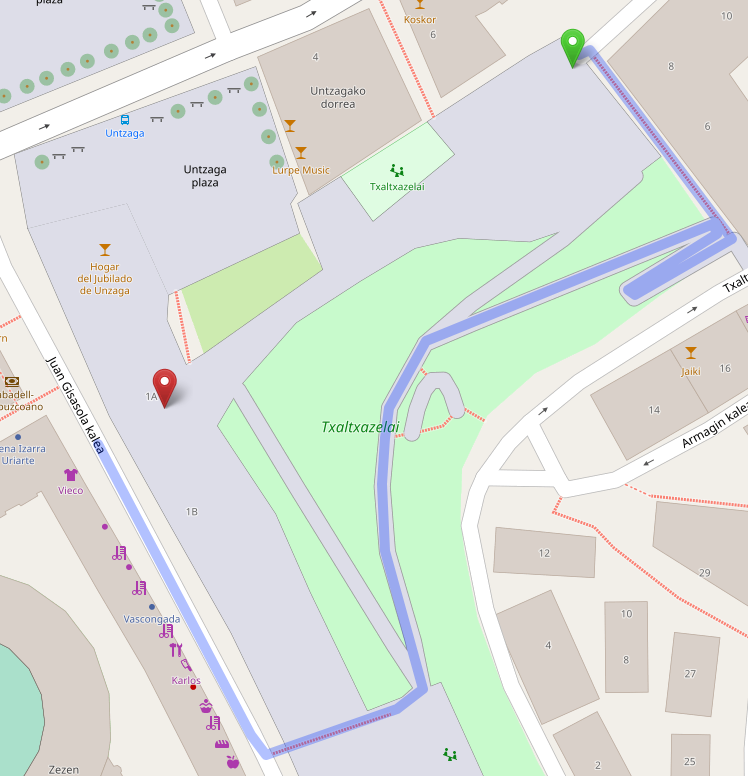It seems that routing does not work on pedestrian areas, as I can see it in this place https://www.openstreetmap.org/directions?engine=fossgis_osrm_foot&route=43.18409%2C-2.47186%3B43.18343%2C-2.47295#map=19/43.18349/-2.47138
So, how should we be tagging so that tracking works in these areas? asked 28 May '19, 13:12 garaolaza |
3 Answers:
Source: https://wiki.openstreetmap.org/wiki/Key:area So I think, we will need to wait routers to be fixed. Have you consider creating issues on routers trackers? answered 28 May '19, 22:16 Binnette |
Ideally the various routers should be able to route through an area. But, with what little I know of routing algorithms, this seems to be very hard to do and I am not aware of any router that uses OSM data that does this. Some mappers figure that a map that actually works for people is preferable to one that doesn't and add "virtual footways" through the pedestrian area aligned with common or logical ways that people usually walk through the area. This allows existing routers to do the right thing. Or at least closer to the right thing than if it is only mapped as an area. However other mappers are adamant that adding "virtual footways" is tagging for the renderer and should not be done. Fortunately for me, there are very few pedestrian areas near me so I don't have to get too involved with either school of mapping and can just sit on the side and watch the arguments that haven't changed in the years I've been mapping. answered 28 May '19, 18:48 n76 2 I feel mapping "virtual footways" is ok as a temporary workaround for routers' shortcomings. However, using the same tag for "virtual footways" as for real footways is not, because doing so negatively affects correctly-written software. This is precisely what the rules against "mapping for the renderer" intend to prevent. (The data would be indistinguishable from the case where there's actually a visibly different path crossing the plaza on the ground.) It would be utterly trivial for routers which do not support routing across polygons to at least at support ways with some newly made-up tag like (This comment is about actual plazas. There's also a separate problem where mappers incorrectly map pedestrianized streets as highway=pedestrian + area=yes despite being clearly linear.) (28 May '19, 20:37) Tordanik |
Open Trip Planner does area routing, If you look at the guidelines they also list how to do area routing for other routing engines: https://wiki.openstreetmap.org/wiki/Guidelines_for_pedestrian_navigation As you see here it is quite okay to mark the main linear features of an area, while it won't yield as good an answer as an area router (unless you went mad and added all possible movements!) https://wiki.openstreetmap.org/wiki/File:Line_area_connection-EN.png For the above example it would be quite okay to add a "F" shaped set of links within the area, while you shouldn't tag for the renderer it seems like the renders know not to render pedetrian ways within an area, that or it's invisible. answered 26 Jun '20, 17:48 DevonshireBoy42 |


There are issues already. It’s just a hard problem to solve (and one with comparatively little financial reward, so unlikely to be prioritised by paid developers).